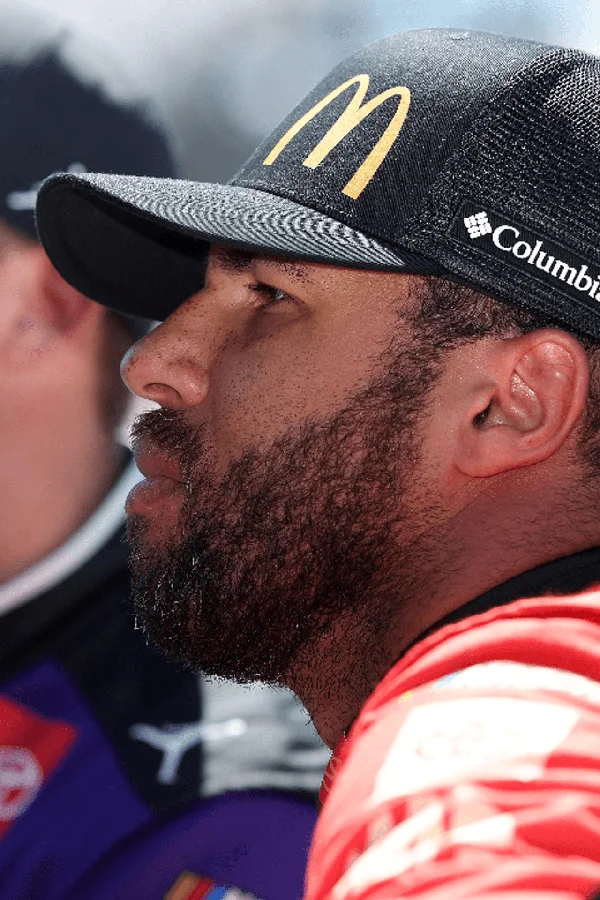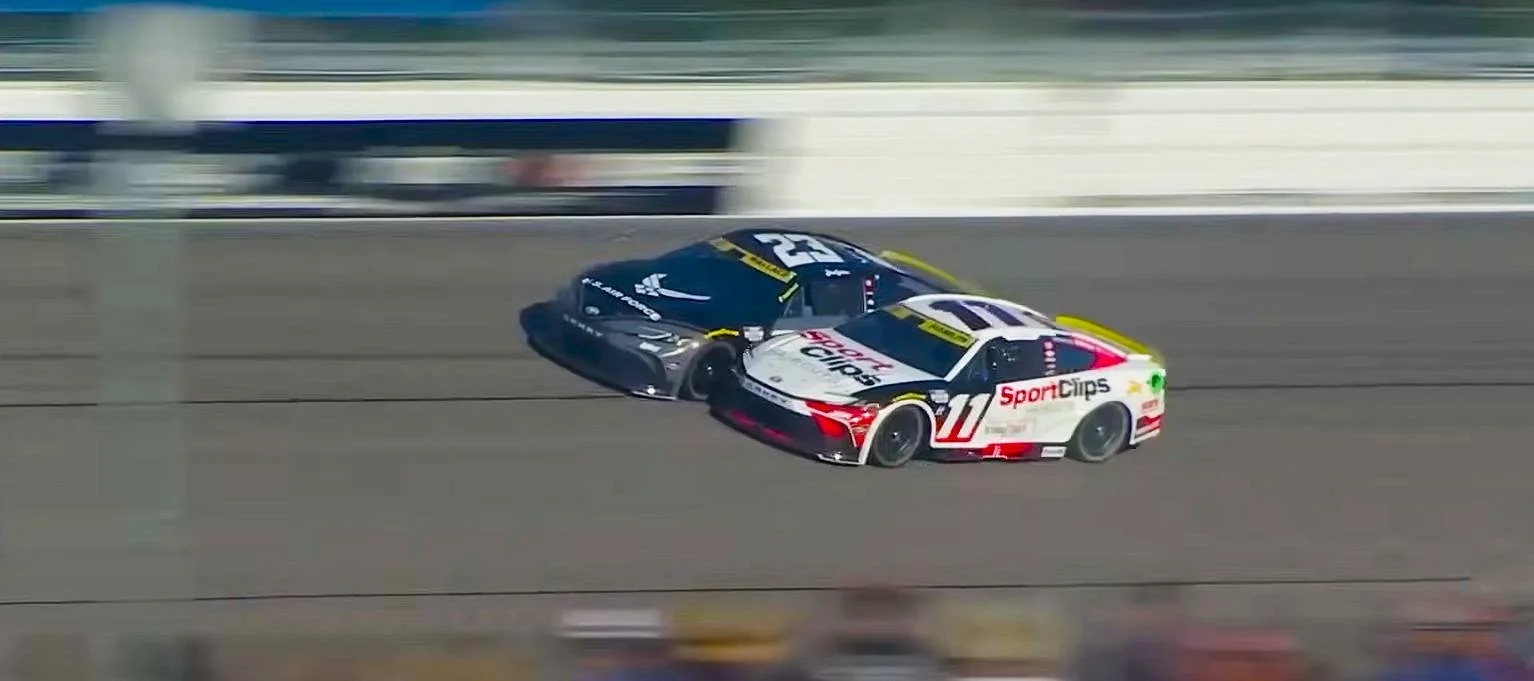Bubba Wallace’s recent showing on the NASCAR circuit has redefined discussions around his career, as the 31-year-old secured a pivotal playoff spot following a win at the Brickyard 400, putting Bubba Wallace racing performance at the center of motorsports conversations. Against a backdrop of skepticism and intense scrutiny, Wallace’s consistent results this season signal his arrival as a top contender in the Cup Series.
A New Standard Set at the Brickyard
Wallace faced a daunting milestone as he entered the 2025 Brickyard 400—he had gone 100 races without a victory. The spotlight grew even brighter due to the ongoing antitrust lawsuit involving 23XI Racing, ensuring that every result carried extra weight. But, on the iconic stage of Indianapolis Motor Speedway, Wallace quieted the doubters, earning a critical finish and ensuring his place in this year’s NASCAR playoffs.
Compared to previous years, this season represents a turning point for Wallace. The No. 23 driver has raised eyebrows with a stronger statistical output and maintained his form into the Round of 12 for the first time, making noticeable progress from last year’s struggles. Nevertheless, members of the NASCAR community and some fans have been slow to adjust their perceptions, continuing to harbor doubts about his capabilities behind the wheel.

Wallace’s Rising Consistency and On-Track Maturity
Throughout his time in NASCAR, Wallace has been compelled to justify his place among the sport’s elite. As the only Black driver competing full-time in the Cup Series, he has often been the subject of outsized scrutiny, both from media and segments of the fanbase. Early stints with Richard Petty Motorsports forced Wallace to squeeze every bit of performance from under-resourced equipment, which made consistent results elusive.
A pivotal shift occurred when Wallace joined 23XI Racing in 2021. That same year, he claimed his first Cup Series win at Talladega Superspeedway, marking a historic milestone. While his teammate Tyler Reddick has often overshadowed him recently, even making it to the Championship 4, Wallace’s 2025 campaign stands out as the finest of his career. So far in 30 races, he’s racked up five top-five finishes, thirteen top-10s, and has led 368 laps. Qualifying efforts have also improved, with frequent top-10 starts, despite not capturing a pole position this season.
What truly distinguishes this year is Wallace’s newfound consistency. Previous campaigns saw flashes of brilliance followed by struggles, but now he competes at a steady, high level. His approach has matured—Wallace is more composed in high-pressure moments and avoids risky maneuvers that once cost him dearly. Earlier in 2025, he narrowly missed wins in consecutive events at Homestead-Miami Speedway and Martinsville Speedway, while also piecing together a streak of four straight top-10 finishes at Dover, Indianapolis, Iowa, and Watkins Glen.
Integral Role Shaping 23XI Racing’s Identity
Wallace’s journey has been tightly interwoven with the evolution of 23XI Racing itself. When NBA legend Michael Jordan and driver Denny Hamlin launched the team in 2020, Wallace became their first driver, immediately embodying the new organization’s values and ambitions. Despite the pressures that come with being both a minority driver and the face of a high-profile startup, Wallace rose to the occasion, providing crucial visibility for the team.
The significance of Wallace’s presence was immediately felt—not just in his results on the track, but in the cultural statement he made regarding diversity and inclusion in NASCAR. Attracting major sponsors like McDonald’s early on, 23XI Racing benefited from Wallace’s marketability and symbolic importance. Meanwhile, partnerships with established racers like Kurt Busch and rising stars like Tyler Reddick offered Wallace benchmarks for growth and an energized team environment. Over time, Wallace has become synonymous with 23XI Racing’s image, forging a culture of resilience and competitiveness that defines the organization to this day.
Facing Criticism and Upholding Authenticity
Throughout his career, Wallace has had to endure an environment filled with skepticism and backlash. Not only did he become the first Black driver since Wendell Scott (1963) to win at NASCAR’s top level, but he also became a public figure willing to confront difficult issues, including speaking candidly about mental health and equality in sports. His high-profile support for the Black Lives Matter movement was met with both admiration and criticism. As Wallace himself put it,
“I felt like I couldn’t be silent and had to say something, stand up for what is right, and use my platform to promote compassion, love, and understanding.”
– Bubba Wallace.
While his outspoken nature has inspired supporters and resonated with many fans, detractors have sometimes used it as ammunition to diminish his performance and question his legitimacy. These early critiques are compounded by his inconsistent results in the first years of his Cup Series career, leading to persistent narratives that linger even as his race-day results improve. For many, Wallace’s initial struggles seem to define him more than his present accomplishments, making it more challenging for newer successes to shift the conversation.
Unforgiving Narratives and Double Standards
Wallace’s treatment by sections of the fanbase and media often contrasts sharply with how other drivers are perceived. For example, Hendrick Motorsports’ Alex Bowman took several seasons to find his footing in the series without drawing the same level of skepticism. Similarly, Daniel Suárez waited five full years for his first Cup win and bounced among multiple teams in the process. Even two-time champ Joey Logano, initially dubbed ‘Sliced Bread,’ was allowed the space to develop before earning his status as a top driver.
In Wallace’s case, accolades are frequently downplayed. When he triumphed at Talladega in 2021, detractors pointed to inclement weather and a shortened race. His win at Kansas Speedway in 2022—where he beat the full field over the complete distance—was also minimized, as pundits questioned whether he ‘deserved’ victory, particularly since Alex Bowman led more laps. Social media can be unforgiving, amplifying every error and fueling narratives that overlook his steady development and competitive results. This scrutiny is indicative of a broader bias within the culture, and it often places unique pressure on Wallace that his peers do not have to face.
Acknowledgment Among Peers and the Value of Respect
The question persists: What more does Wallace need to accomplish to quiet those who underestimate him? For some fans, the moving target for acceptance will always remain out of reach, no matter how many races he wins or playoffs he qualifies for. The expectations for Wallace escalate with every success, revealing the stubborn nature of certain perceptions held against him. Rather than fixating on universal approval, Wallace has seemingly come to value the respect from those who compete with him week in and week out.
Within NASCAR’s garage area, his peers—other drivers, crew members, and even his teammate Tyler Reddick—recognize the immense strides he has made, both as a competitor and as a leader. Sponsors see value in his performances beyond his symbolic role. While the noise on social media and among certain fans may never fully dissipate, Wallace’s influence on his team and growing list of supporters underscores a more meaningful form of acceptance.
Wallace’s Future and Enduring Impact on NASCAR
Bubba Wallace arrives at this moment as the strongest version of himself yet—steady, confident, and driven by both personal ambition and the opportunity to inspire future generations. With disappointing results now firmly behind him, Wallace has closed the gap between himself and star teammates like Tyler Reddick. He currently stands as a pivotal figure not only on track, but also as a leader guiding 23XI Racing into its most competitive era yet.
Wallace now possesses a legacy that extends well beyond the scoreboard: he is an example for aspiring Black drivers and a symbol of cultural progress in a sport that has traditionally struggled with diversity. While criticism and doubt may continue from corners of the fanbase or media, Wallace’s recent success and the resonance of his achievements on and off the track have forever changed the NASCAR landscape. The next chapters of his career will be watched closely, not only for race wins and playoff runs but also for the inspirational mark he continues to leave on the sport.
